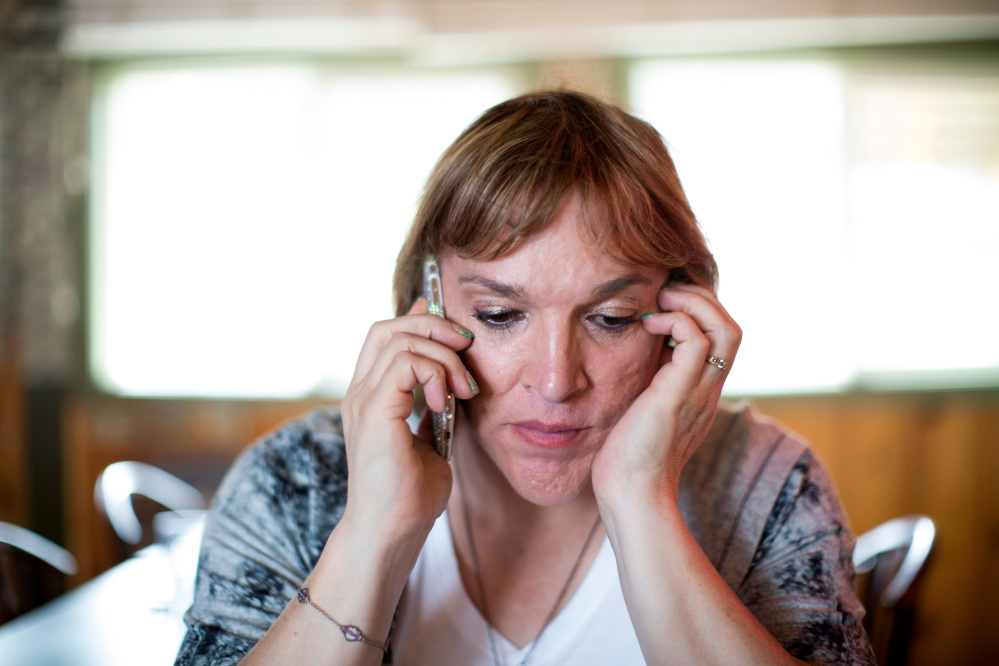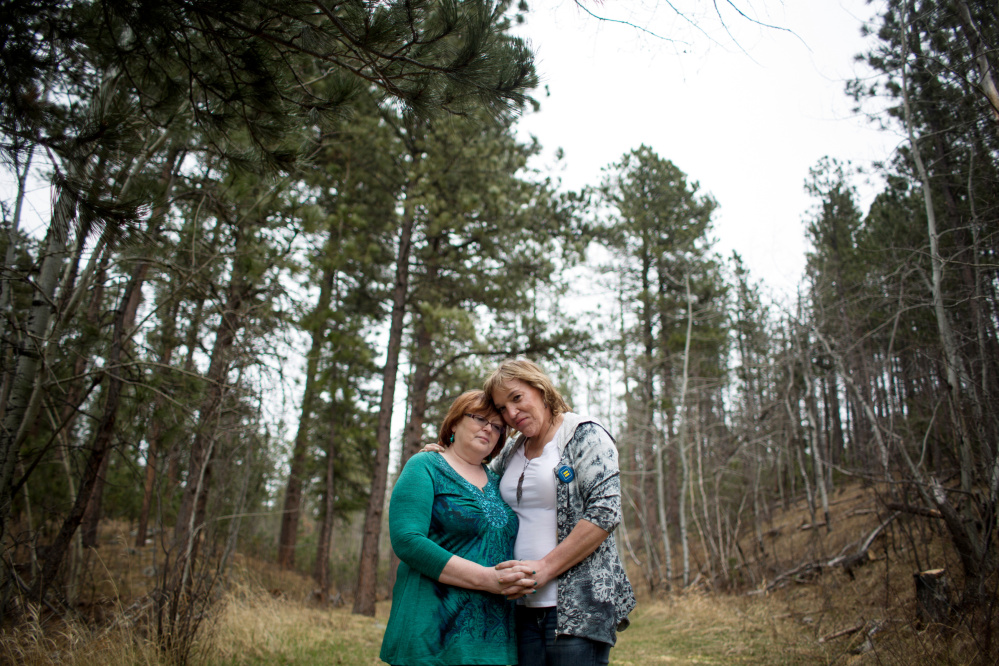After decades of fighting her family, her community and herself over her gender identity, Kendall Balentine finally made peace with it. She became content to live out her retirement quietly, for the first time in her life as a woman, with her wife and dogs in the relative isolation of Deadwood, South Dakota.
That is, until last month. The South Dakota legislature advanced a bill requiring transgender students to use the bathroom matching the sex on their birth certificates. When an organizer with a national gay rights group called to see if she would come forward to call for the governor to veto the bill, requiring her to push herself into the limelight in a way she never imagined, she didn’t hesitate.
“All my life, I put myself in harm’s way because I couldn’t be who I was,” said Balentine, 49, a retired Marine and deputy sheriff who fully transitioned from living as a man to a woman last year. “I decided now I was willing to die for who I am and fight for those who didn’t have a voice.”
Balentine is part of a new wave of transgender people stepping out of the shadows to fight a surge in state bills requiring people to use the bathrooms, locker rooms and dressing rooms that differ from their gender identity – measures they consider unnecessary, dangerous and rooted in offensive stereotypes.
Many, like Balentine, have been recruited for the spotlight by national lesbian, gay, bisexual and transgender rights groups, scrambling to address a critical weak spot in their broader fight for rights: the country’s unfamiliarity with transgender people.
This small but visible group has emerged as the newest target, say gay rights activists, of conservatives who want to slow the momentum of last year, when the Supreme Court ruled that same-sex couples have a right to marry.
After that landmark victory, activists moved to expand LGBT rights by pushing for local and state protections against discrimination. Their opponents seized on one singular outcome of the proposed expansion: the bathroom issue.
By arguing that nondiscrimination measures will permit biological males to enter women’s bathrooms, they have found a message that resonates with a broader cross-section of voters than measures that target same-sex marriage, which more than half of Americans now support.
The most stark example of that resonance came last fall, when Houston, a diverse and Democratic-leaning city that, at that time, was led by a gay mayor, voted overwhelmingly to repeal a nondiscrimination ordinance that opponents said would lead to male sexual predators gaining access to sex-segregated spaces.
“I think it makes common sense to voters that they don’t want men to use women’s locker, shower or bathroom facilities,” said Mat Staver, chairman of the Liberty Counsel, which has endorsed the bathroom bills. “The transgender agenda could be, and I think is becoming, the Achilles’ heel of the gay and lesbian movement.”
Cognizant that bathroom bills imperil broader rights for all LGBT people, the gay rights movement is shifting much of its formidable organizational machinery to focus on transgender issues. Groups are rallying large companies and celebrities who long ago signed on to gay rights to vocally oppose laws that they view as targeting transgender people. They are diverting millions of dollars to campaigns that depict transgender people as ordinary Americans deserving of dignity and legal protections.
They are combing states for transgender people they can groom to lobby lawmakers and speak to media representatives, much as they identified gay men and lesbians with compelling personal stories to become faces of the movement and plaintiffs in lawsuits. And they are recruiting parents of transgender children to speak out on their kids’ behalf.
The “movement-wide focus” now centers on “how to crack the code on figuring out how to introduce transgender people to America,” said Kasey Suffredini, chief program officer for Freedom for All Americans, a group founded last year to prod cities, states and Congress to expand minority civil rights protections to gay and transgender people.
In a way, the task of introducing the public to transgender people has never been so easy. High-profile figures such as Olympian Caitlyn Jenner and actress Laverne Cox have put an attractive public face on the community. The Emmy-winning television series “Transparent” has delved deeply and frankly into one family’s dynamics after the father transitions to a woman. Transgender youths are increasingly making their presence known in schools.
The movement has logged some significant wins – including last week before the U.S. Court of Appeals for the 4th Circuit in Richmond, Virginia, which sided with a transgender teenager who sued his school district for forbidding him to use the men’s restroom.
But challenges remain. The transgender population is tiny, about 700,000 adults, according to the most recent serious effort to count the population, a 2011 study by the Williams Institute (the study’s author, Gary J. Gates, said in an interview that he thinks the number is an undercount).
Copy the Story LinkSend questions/comments to the editors.




Success. Please wait for the page to reload. If the page does not reload within 5 seconds, please refresh the page.
Enter your email and password to access comments.
Hi, to comment on stories you must . This profile is in addition to your subscription and website login.
Already have a commenting profile? .
Invalid username/password.
Please check your email to confirm and complete your registration.
Only subscribers are eligible to post comments. Please subscribe or login first for digital access. Here’s why.
Use the form below to reset your password. When you've submitted your account email, we will send an email with a reset code.